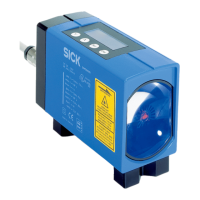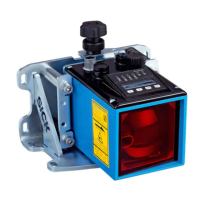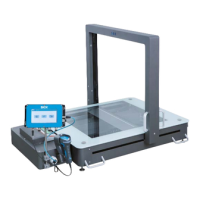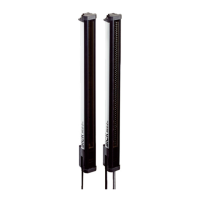
Do you have a question about the SICK DUSTHUNTER T100 and is the answer not in the manual?
| Measuring principle | Light scattering |
|---|---|
| Ambient operating temperature | -20 °C ... +50 °C |
| Operating Temperature | -20 °C ... +50 °C |
| Power Supply | 24 V DC |
| Output | 4 mA ... 20 mA (galvanically isolated) |
| Protection Class | IP65 |
Highlights potential dangers from hot gases, high pressure, and electrical equipment.
Explains warning symbols, levels, and general document conventions used.
Defines the specific purpose and correct use of the DUSTHUNTER T measuring system.
Outlines user responsibilities for installation, operation, and safety of the system.
Details the light-based measuring principle and key variables like transmission and opacity.
Lists and describes the standard components of the DUSTHUNTER T measuring system.
Introduces the SOPAS ET software for device operation and configuration.
Provides an overview of project planning tasks for device installation.
Covers the onsite assembly procedures for the DUSTHUNTER T system.
Guides through the electrical connections and safety requirements.
Explains how to connect the DUSTHUNTER T to a PC using a USB connection.
Details settings required for optimal measurement based on application.
Guides on aligning the sender light beam for accurate transmission measurements.
Explains the process of scaling the system for accurate transmission measurements.
Details cleaning and alignment maintenance for optical components.
Covers maintenance tasks for the purge air system components.
Covers operational procedure for safely shutting down the system.
Lists common malfunctions and error messages related to the sender/receiver unit.
Covers malfunctions and error messages specific to the MCU control unit.
Step-by-step guide for safely replacing a fuse in the MCU control unit.
Presents detailed technical specifications for the DUSTHUNTER T system.
Provides information on the system's measuring ranges for dust concentration.
Lists physical dimensions and part numbers for system components.
Lists available accessories and their part numbers.
Details optional modules that expand the MCU's functionality.











